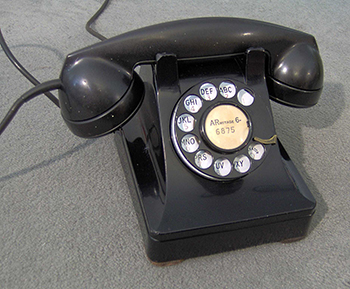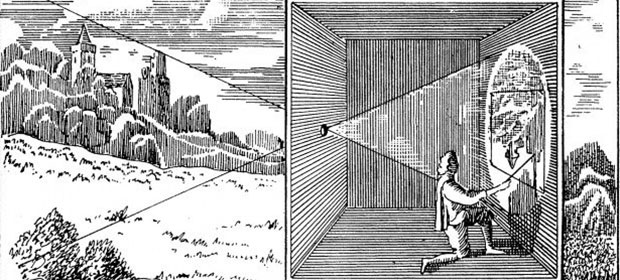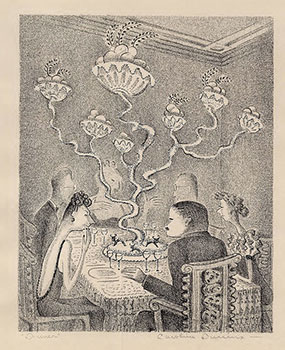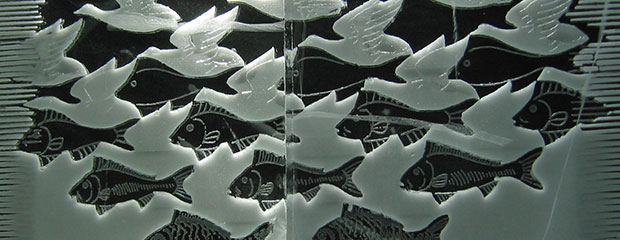"UX design" entries

Scott Hurff on designing at Tinder
The O’Reilly Design Podcast: Design at Tinder, Awkward UI, and the UI Stack.
Subscribe to the O’Reilly Design Podcast, our podcast exploring how experience design—and experience designers—are shaping business, the Internet of Things, and other domains: Stitcher, TuneIn, iTunes, SoundCloud, RSS.
In this week’s Design Podcast episode, I sit down with Scott Hurff, product manager and lead designer at Tinder, Inc. Hurff is the author of Designing Products People Love. In this episode, we talk about how Tinder approaches design, avoiding awkward UI, and why customer research is the most important skill for future designers.
Here are a few highlights from our conversation:
Questions of structure
At Tinder, the product team is about five people, six people. What’s interesting is that we’re trying to grow really quickly. There’s a give and take on how we divide up product design responsibilities and product management responsibilities. There is a lot of engineering talent here, and they need a lot of product to work on. It’s a matter of, how do we structure ourselves so we can give them thought-through, packaged-up, ready-to-go ideas and concepts while still hammering out the details in time.
Design as a full-contact sport
Design is such a part of the Tinder experience. It may not seem like that’s the case because it’s such a simple app, but that’s only because everything goes through this distillation process. You have to really fight for real estate and your idea. Design’s really a full-contact sport here. You have to bring in all the big guns to make your case. Sometimes these can be really long debates, but they’re good; they’re healthy. They get the ideas out on the table, and a lot of times, design really has to be put through its bases to prove itself.

Tweaking personas: Mastering the hunt for the ideal user
Personas are a useful tool, almost always used badly.
Register for the UX Design for Growth — Improving User Conversion training session with Laura Klein. In this online, interactive training workshop, Klein, author of “UX for Lean Startups,” will teach you to design for product growth.
Personas have always struck me as a potentially useful tool that is almost always used badly. In theory, they’re great. Who doesn’t love a deliverable that is designed to get everybody on the team more familiar with the ideal user? Why wouldn’t we create something to help us focus our design and engineering efforts around the real people using our products?
Unfortunately, the reality rarely lives up to the hype. Personas, as they are created in many organizations, aren’t nearly as useful as they could be. They’re rarely based on real user insights developed during research. They tend to be overly broad and generalized. They’re descriptive, rather than predictive. And that’s just a few of the things people get wrong. Read more…

Privacy and security are every UX designer’s responsibility
The O’Reilly Design Podcast: Ame Elliott on UX privacy and security, and how architecture informs her design work.
Subscribe to the O’Reilly Design Podcast, our podcast exploring how experience design — and experience designers — are shaping business, the Internet of Things, and other domains.
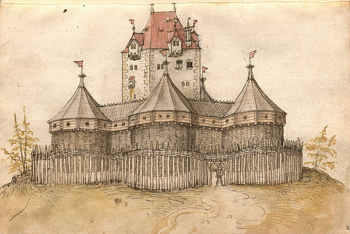 In this week’s Design Podcast episode, I sit down with Ame Elliott, design director at Simply Secure. She addresses the relationship between — and challenges of — privacy and security, noting “there’s plenty of tough to go around.”
In this week’s Design Podcast episode, I sit down with Ame Elliott, design director at Simply Secure. She addresses the relationship between — and challenges of — privacy and security, noting “there’s plenty of tough to go around.”
Elliott also talks about how her experience of attending architecture school informs her design work, and looks at the responsibility of designers to create for a greater good.
Here are a few highlights from our chat:
I think architecture can be a wonderful form of a design-inspired liberal arts education. If you look at places like Italy, I think there are certainly ways that you can go to architecture school and not be set up to practice architecture. The studio experience of actually being together in this communal space, working on a drafting table, making things visual — it’s so foundational to a lot of the things that are called ‘design thinking’ today.
Privacy or confidentiality is one technical goal of security. There are other technical goals of security: integrity, non-reputability, and other kinds of things. Coming at this from a human-centered design perspective … I care about what end users experience, and privacy feels like the quality people are looking for in an interaction.

Knowing when not to design
Don’t waste time on features that users don’t want.
Attend “UX Design for Growth,” a training session by Laura Klein that will give you the skills you need to design products that convert and retain users.
After many years as a designer, I’ve realized that some of the most important design decisions have nothing to do with what any of us consider design. Instead of designing the perfect version of a feature, sometimes the best thing we can do is learn that we shouldn’t build the feature in the first place.
In my all-day, online workshop on September 15, 2015, I’ll be talking about another aspect of building products: how to make them grow. Potentially fabulous products fail every day because product managers and UX designers don’t spend enough time thinking about how their product is going to be discovered by new users.
The following is an excerpt from my book, UX for Lean Startups, where I give one practical tip for learning whether or not you should build a specific feature for your product. If you’d like some practical tips on getting people to start using all those features you decide to build, please join me on September 15th for my UX Design for Growth training session. Read more…

Designing at Nasdaq
The O’Reilly Design Podcast: Aaron Irizarry on getting and keeping a seat at the table.
Subscribe to the O’Reilly Design Podcast to explore how experience design — and experience designers — are shaping business, the Internet of Things, and other domains.
Welcome to the inaugural episode of our newly launched O’Reilly Design Podcast. In this podcast episode, I chat with Aaron Irizarry. Irizarry is the director of UX for product design at Nasdaq, co-author of “Discussing Design” with Adam Connor, and a member of the program committee for O’Reilly’s Design Conference.
Design at Nasdaq: A growing team
I first noted Nasdaq’s commitment to design when talking to Irizarry about his book and the design conference hosted by Nasdaq that Irizarry helps develop:
It’s interesting to see an organization that didn’t have a product design team as of, what — 2011, I believe. To see the need for that, bring someone in, hire them to establish a team (which is my boss, Chris), and then see just the transition and the growth within the company, and how they embraced product design. We had to work a lot, and really educate and pitch in the beginning, explain to them the value of certain aspects of the job we were doing, whether that was research, usability, testing, why we were wanting to do more design of browser and rapid prototyping, and things like that.
…
We believe we’re helping structure and build, and I think we still have work to do as a design-led organization. We recently did our Pro/Design conference in New York. Our opening speaker was the president of Nasdaq, and to hear her reference the design team’s research, and to be in marketing meetings, and discussing the personas that we created, and to hear the president of Nasdaq speak about these kind of artifacts and items that we feel are crucial to design and the design process, it was a mark for us like, ‘We’re really starting to make a mark here. We’re starting to show the value of what these things are,’ not just because we want design, but we believe that this approach to design is going to be really good for the product, and in the end, good for the business. Read more…

Information architecture’s role in UX design
Jorge Arango discusses the state of IA and the importance of designers' understanding of context and perspective.
Jorge Arango is an information architect who has been practicing in the user experience field for more than 20 years. Before moving to San Francisco about a year ago, his work was conducted in Panama. Last year, he moved to the San Francisco Bay Area and now works as a partner at Futuredraft, a digital product design consultancy. Arango brings a unique perspective, given his background in architecture prior to becoming an information architect. He is currently finishing up the 4th Edition of Information Architecture — lovingly referred to as “The Polar Bear book” — with Louis Rosenfeld and Peter Morville.
IA’s broadening appeal
Information architecture (IA) has always been an important part of user experience design, though not always acknowledged as such. With the emergence of social, IoT, and mobile, we have watched IA taking on a more dominant role in product development. Arango talked a bit about the evolution:
I’m surprised by how many people actually know about it because I think, frankly, a lot of what we do is fairly esoteric. I’m not just talking about information architects. I’m talking about those of us in technology in general, and in the design professions. On having moved to California, I have this open question in my mind: how much do people know about this stuff here? Is it something that is talked about? I’ve been pleasantly surprised by interactions with clients and prospects … There seems to be a realization. In many cases, they probably don’t know to call it ‘information architecture’ per se, but there seems to be a realization that stuff needs to be easy to find and easy to understand.

Experience design gives you the competitive edge
The O'Reilly Radar Podcast: Andy Budd on the rising value of design, the bright future of agencies, and designers on the brink.

Subscribe to the O’Reilly Radar Podcast to track the technologies and people that will shape our world in the years to come.
This week on the Radar Podcast, O’Reilly’s Mary Treseler chats with Andy Budd, a partner and UX designer at Clearleft. Their wide-ranging conversation circles around lessons learned at Clearleft, understanding who your user really is, and why design agencies have a bright future. Budd also offers some insight into the people and projects he’s keeping an eye on, or rather, as he explains, keeping a look out for — the next big things probably aren’t yet on our radar, he says.
As Clearleft, a user-experience design consultancy, has matured over its 10 or so years, Budd says they’ve gotten a lot more interested in the psychology and philosophy behind design, how designers’ actions affect the world and society in general. The value of design, Budd notes, has been increasing over the past few years, becoming equal to — or even beginning to surpass — the prominence technology has traditionally enjoyed:
When I used to go to technology conferences, six, seven, eight years ago, the general narrative was around actual technology. It was around the developers as heroes around the technical stack being the main differentiator. Design was often lost in the conversation. Now, I think that’s changed. I think in the last three or four years, actually the technology stack, and the technology in general, has become a lot more commoditized, with the rise of rapid prototyping tools, with the rises of libraries and frameworks, and also just the general maturation of products. I think it’s very rare nowadays that a startup or product company will have, particularly in the Web space, will have a massive competitive advantage, just through technology alone. Read more…

How to make a UX designer
Heather Wydeven talks about her entry into the field of UX and what helped her succeed as a new UX designer.
Where do new designers come from? In the case of Heather Wydeven, a UX designer at The Nerdery, she came to UX via theater and then graphic design. In a recent interview, Wydeven took the time to speak with me about her route to UX design, what it was like entering the UX field, what new designers should know, and how more experienced designers can help bring new designers into the fold.
After spending several years working in theater, Wydeven decided to channel her creative skills into a career in graphic design. She came to UX design without even realizing what UX was, but the root of her motivation was something that’s familiar to many UX designers: a recognition that things could be better and a desire to solve problems.
“While I was doing graphic design,” Wydeven said, “I started to become more curious about web design and UX design specifically, though at the time I didn’t know it was called ‘UX design.’ I was using websites and being frustrated about my experiences on those websites and thinking, ‘There’s got to be a way to make these better. This has got to be somebody’s job to design these websites better than they are now.’” Read more…

Today’s designers are solving business problems
Tom Greever talks about the evolution of experience design and the challenges — and opportunities — facing designers today.
It’s no secret that design is playing a more prominent role within many organizations. Designers are becoming fundamentally linked to the development and success of products and services versus their more historical role polishing the appearance of those products and services. I recently sat down with Tom Greever, UX Director at Bitovi, to talk about the evolution of UX design, challenges that design professionals face today, and some of the keys to the success of the modern UX designer. Greever describes the evolution:
“Traditionally, the only problem we were trying to solve was to make something look better. It was a problem of just aesthetics, but now our designs have to solve for things like ease of use, or conversion, or user engagement. We’re solving business problems. We’re helping businesses achieve their goals through design, and if we can’t do that, then our designs aren’t any good. We’re not creating the right experience. They’re not providing value.”
